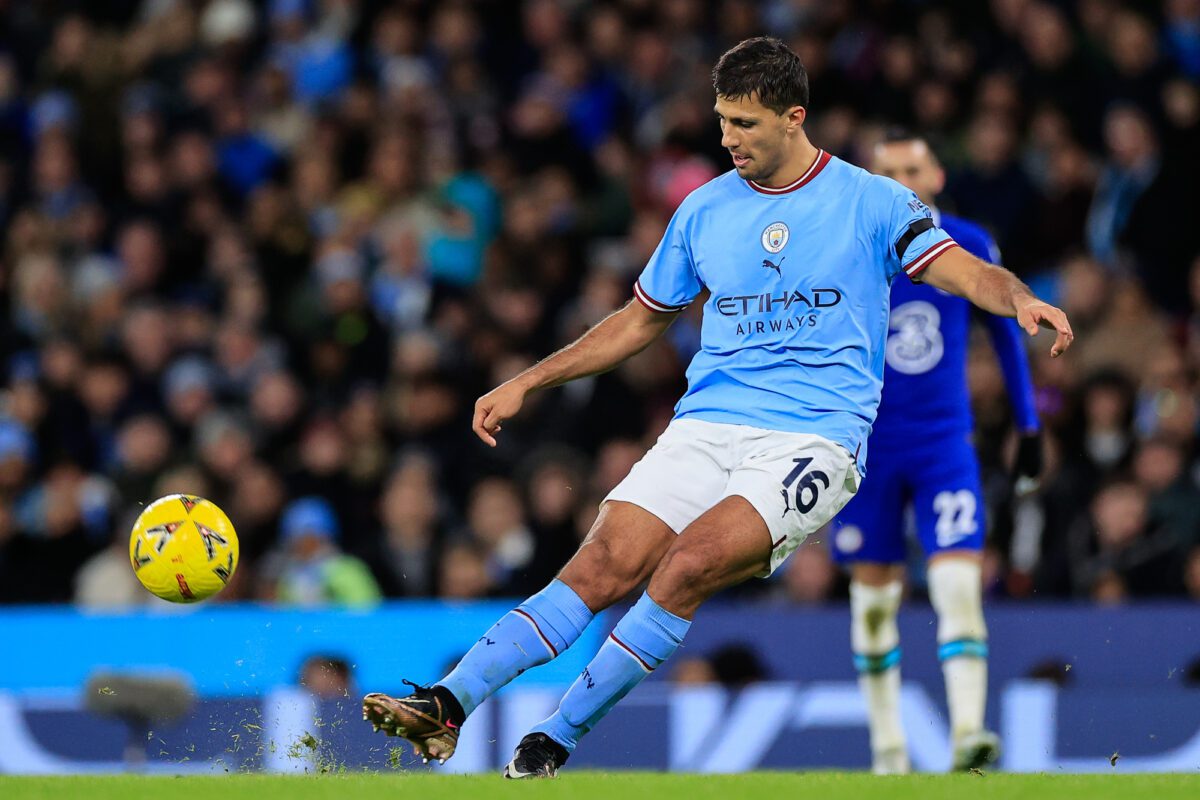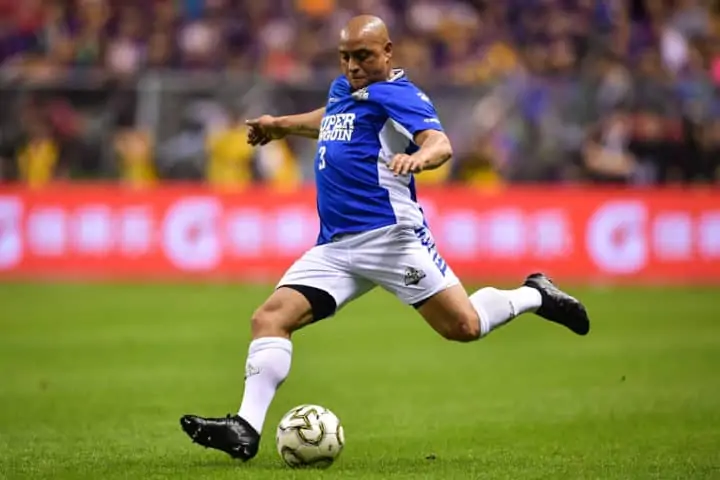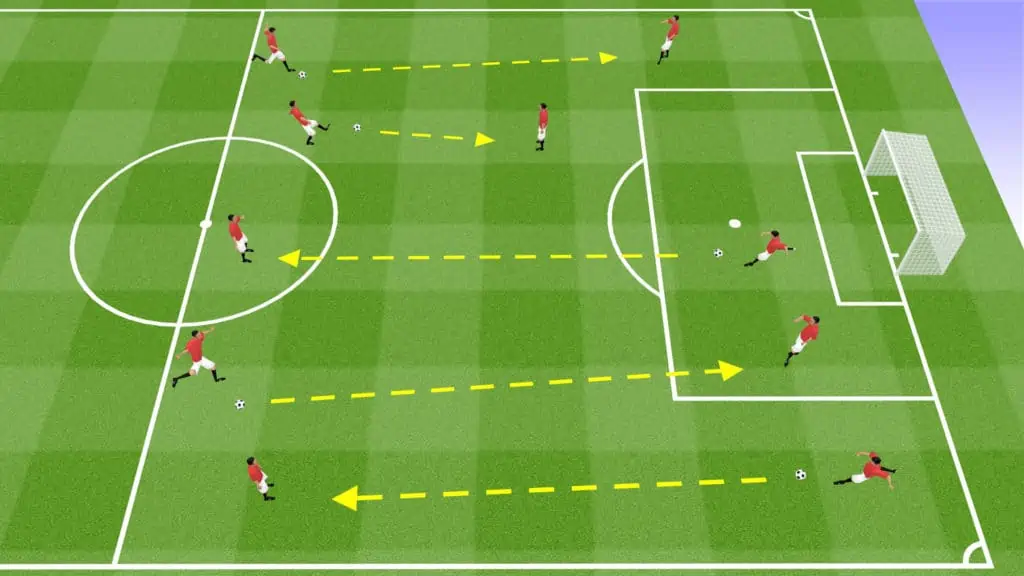Share the post "Trivela Technique: Soccer’s Most Deceptive Shot Explained"
For soccer novices, the ‘Trivela’ may seem magical, but for fans, it’s one of the most captivating strategies. The player strikes the ball with the outside of the boot to add curve and misdirection. The Trivela’s spinning action confuses goalkeepers and defenders because it uses an unusual contact point.
Mechanical knowledge and flair are needed to perform a Trivela. I line up for a shot at a different angle than for a kick. Wrap a foot around the ball and touch its outside. The shot’s trajectory and curve depend on my body position, impact point, and follow-through. The Trivela’s effectiveness depends on precision and timing as much as power.
There are many methods to play and score in soccer, but learning the Trivela is special. The Trivela enhances my game, whether I’m trying to gently tuck the ball into the far corner of the net or mislead a wall of defenders on a free-kick. It takes practice and courage, but when done right, it can be a magnificent scoring move.

Understanding the Trivela Technique
The Trivela is a soccer technique involving a unique way of striking the ball that results in a curved trajectory. Let’s explore its origins, the physics that make it work, and the players who’ve become famous for using it.
Watch our video on how to trivela here:
Origins of the Trivela Shot
The term “Trivela” is Portuguese and was popularized by the unique way Portuguese players hit the soccer ball. My research suggests that the technique itself predates its name and has been around as long as soccer has had creative, skillful individuals looking to bend the ball. It’s believed to have been used informally in various cultures, coming into the spotlight when skilled players showcased it in professional games.
Physics Behind the Trivela
The physics of the Trivela involve striking the ball with the outside of the foot, specifically the outside curve of the boot. Here’s a simple breakdown:
- Contact Point: Outside of the boot.
- Ball Contact Area: Sits between the laces and the toe, off-center.
- Kick Motion: A whip-like motion of the leg swinging across the body.
- Spin: The strike imparts lateral spin, causing the ball to curve in the air.
The combination of the ball’s spin and the initial direction gives the Trivela its deceptive trajectory, making it hard for goalkeepers to predict the ball’s path.
Famous Trivela Practitioners
Certain players have become synonymous with the Trivela technique, turning it into an art form. Among the most celebrated practitioners:
- Ricardo Quaresma – Often credited with bringing the technique to a wider audience, especially noted for Trivela goals in international matches.
- Roberto Carlos – Known for his powerful left foot, he sometimes utilized the Trivela for crosses and shots.
- Cristiano Ronaldo – Has executed the Trivela for long-range passes and shots, showcasing its effectiveness.
These players exemplify how mastering the Trivela can expand a footballer’s arsenal, making them unpredictable and spectacular to watch.

Executing the Trivela Shot
I’ll guide you through perfecting the Trivela, a shot that surprises goalkeepers due to its unusual yet effective curving trajectory.
Key Components of the Technique
The Trivela shot demands a blend of precision, timing, and the right angle of approach. It’s crucial to use the outside of my boot to create a sweeping motion that generates spin.
- Precision: Aim 5-10 yards inwards for the ball to swerve.
- Timing: Strike the ball at the optimal moment in its roll.
- Angle of Approach: Approach the ball from an angle that allows for effective use of my foot’s outside edge.
Positioning the Body and Foot
To execute the Trivela, my body and foot must be positioned correctly. I need to approach the ball at an angle while keeping my kicking foot’s ankle locked.
- Body Angle: Face slightly away from the target, allowing my kicking leg to swing across the ball.
- Foot Position: My supporting foot should be a comfortable distance away, in line with the ball, giving me balance and precision.
Contacting the Ball
Making contact with the ball requires hitting it with the outside part of my boot, slightly off-center. This contact point is essential to produce the desired effect.
- Surface: Use the tough part of the outside of my boot.
- Impact: Strike the lower half of the ball to introduce the upward and sideways spin.
Common Mistakes and Corrections
Many players struggle with the Trivela initially due to several common mistakes, but understanding these can lead to quick corrections.
- Incorrect Contact Point: Hitting the center rather than slightly off-center. Correction: Aim for the lower side of the ball.
- Poor Body Positioning: Leaning back too far. Correction: Lean slightly into the kick to maintain control.
By focusing on these aspects, you can improve the Trivela shot, making it a deceptive and powerful tool on the soccer field.
Strategic Use in Games
In competitive soccer, the Trivela is a powerful weapon I use to outsmart my opponents and gain a strategic advantage.
When to Use the Trivela
I decide to use the Trivela when I need to bend the ball around a defender or during set-pieces where precision is crucial. For instance, during corner kicks, the curved trajectory can catch goalkeepers off guard, making it effective for assists or direct shots on goal.
Trivela in Offensive Plays
I often incorporate the Trivela in offensive strategies to provide unexpected crosses or to finish with a deceptive shot. It’s particularly useful:
- Crossing: When I’m out wide and need to curve the ball towards my teammates in the box, cutting inside and using the Trivela allows me to avoid the natural trajectory of my dominant foot.
- Shooting: If I see a small opening near the post, the Trivela can be the perfect choice to curve the ball where a traditional shot would not suffice.
Trivela for Creating Space
The threat of a Trivela often causes defenders to approach me differently, which can be advantageous:
- Drawing Defenders: By shaping up as if I’m about to use the Trivela, defenders might preemptively move to block the expected path, unwittingly opening up space elsewhere.
- Surprise Factor: The unique outside curve of the shot can lead to confusion among defenders, allowing my teammates to exploit the spaces that emerge as a result.

Training and Practice
To excel in executing the Trivela shot, dedicated practice and the right training regimen are indispensable. It requires a harmony of technique, physical fitness, and mental readiness.
Drills for Mastering Trivela
I start with a simple Trivela Passing Drill, where I place a series of cones in a zig-zag formation and practice curving the ball around them using the Trivela technique. The key is to focus on the contact point on the ball and adjusting the angle of my approach.
- Cone Weave: Place cones 3 feet apart in a line.
- Pass: Practice passing the ball in a curve around each cone.
- Repeat: Do this 10 times each session.
Next, I enhance my accuracy with a Target Practice Drill. This involves setting up targets in the corners of the goal and aiming to hit them consistently using the Trivela shot.
- Set up small targets in each corner of the goal.
- From the edge of the box, aim for the targets using the Trivela technique.
- Aim to hit each target 5 times before moving to the next one.
Conditioning for the Perfect Shot
For the Trivela shot, leg strength and balance are crucial. I incorporate exercises that target these areas.
- Squats and Lunges: Strengthen leg muscles.
- Balance Drills: Use a balance board to improve stability.
After the strength exercises, I follow a routine of flexibility training to maintain a full range of motion needed to execute the Trivela.
- Dynamic Stretching: Prior to practice for muscle readiness.
- Static Stretching: After practice to prevent stiffness.
Mental Preparation
Executing the Trivela technique under pressure requires mental clarity and confidence. I practice visualization by imagining successful shots during training sessions, reinforcing the muscle memory and technique.
- Visualize: Spend a few minutes before practice seeing the perfect shot in my mind.
Impact on Modern Soccer
The trivela technique has significantly shaped modern soccer, influencing shooting skills, tactical approaches, and the broader cultural ethos of the game.
Influence on Shooting Techniques
The advent of the trivela revolutionized the approach to kicking the ball, offering a deceptive finesse that often leaves goalkeepers flummoxed. I’ve observed that players adept in this technique, such as Ricardo Quaresma, have inspired a new generation to add such finesse shots to their repertoire. This has led to a marked increase in the variety of shooting techniques taught at soccer academies.
- Elements of Trivela Shooting Technique:
- Side of the foot usage
- Outside curve imparted on the ball
- Precision in striking ball’s off-center
Trivela in Tactical Evolution
In tactical play, the trivela allows attackers to bend the ball around defensive lines, making it a crucial element in breaking tight defensive setups. I have seen teams incorporating trivela specialists, changing the dynamics of set pieces and open play crossing. The trickery involved can alter a game’s pace and create opportunities that traditional passing lanes cannot provide.
- Tactical Adaptations:
- Enhanced set-piece strategies
- Formation adjustments to exploit trivela crosses
- Wingers and midfielders’ positioning for optimal trivela use
Share the post "Trivela Technique: Soccer’s Most Deceptive Shot Explained"
Joel is a seasoned soccer journalist and analyst with many years of experience in the field. Joel specializes in game analysis, player profiles, transfer news, and has a keen eye for the tactical nuances of the game. He played at various levels in the game and coached teams - he is happy to share his insight with you.



